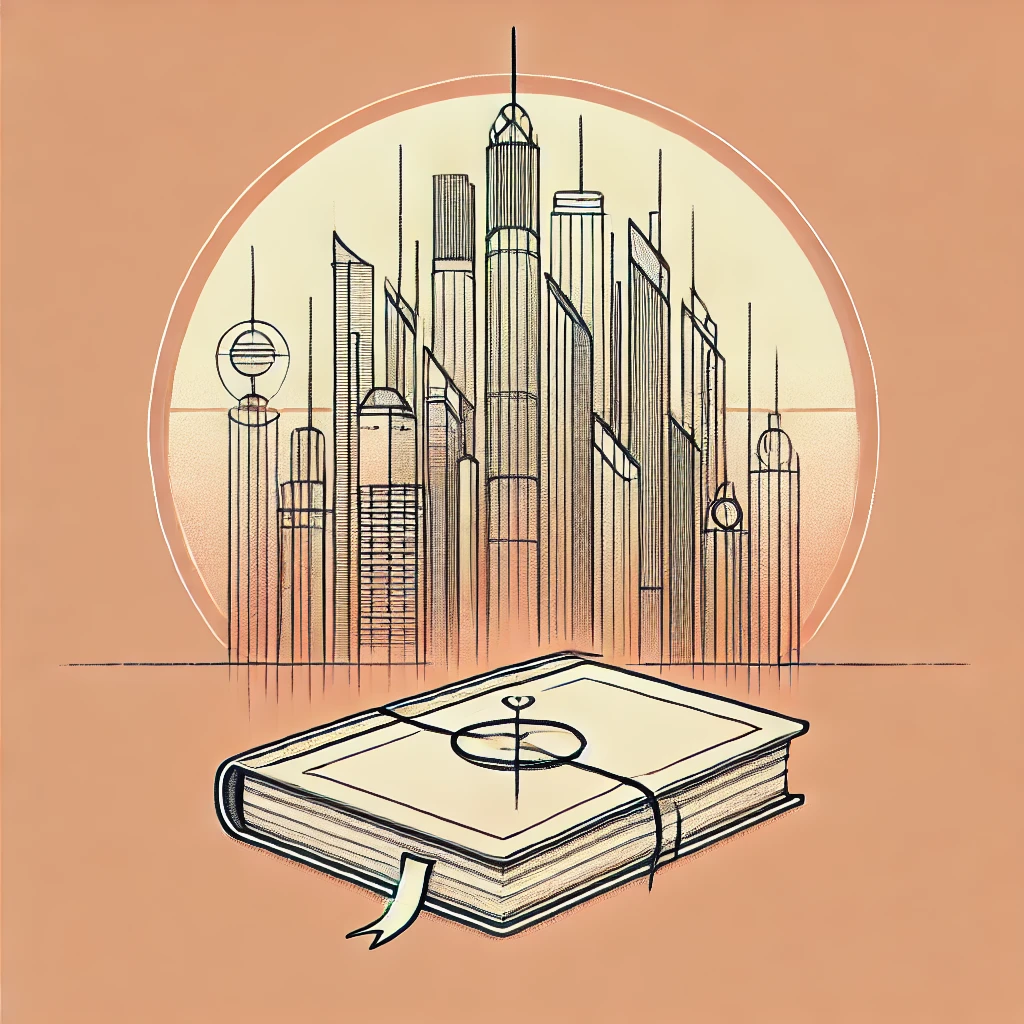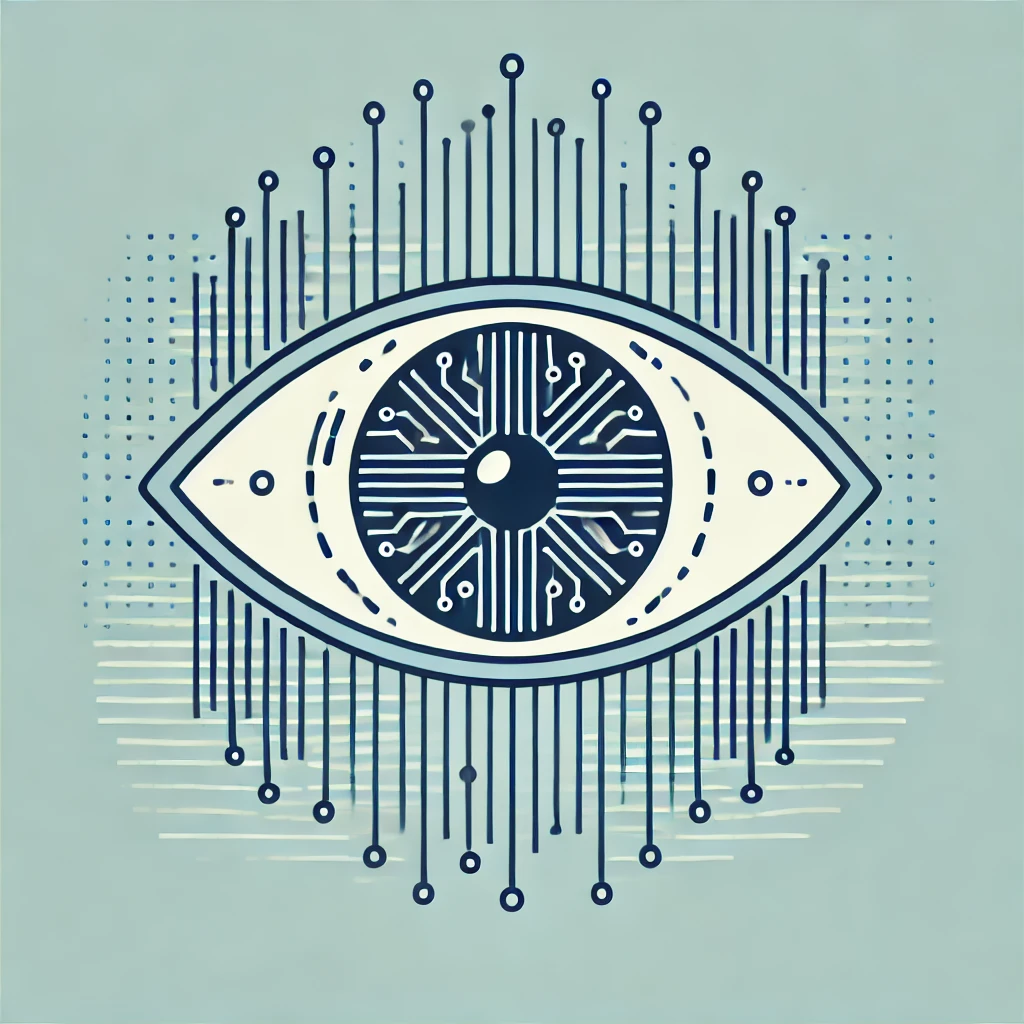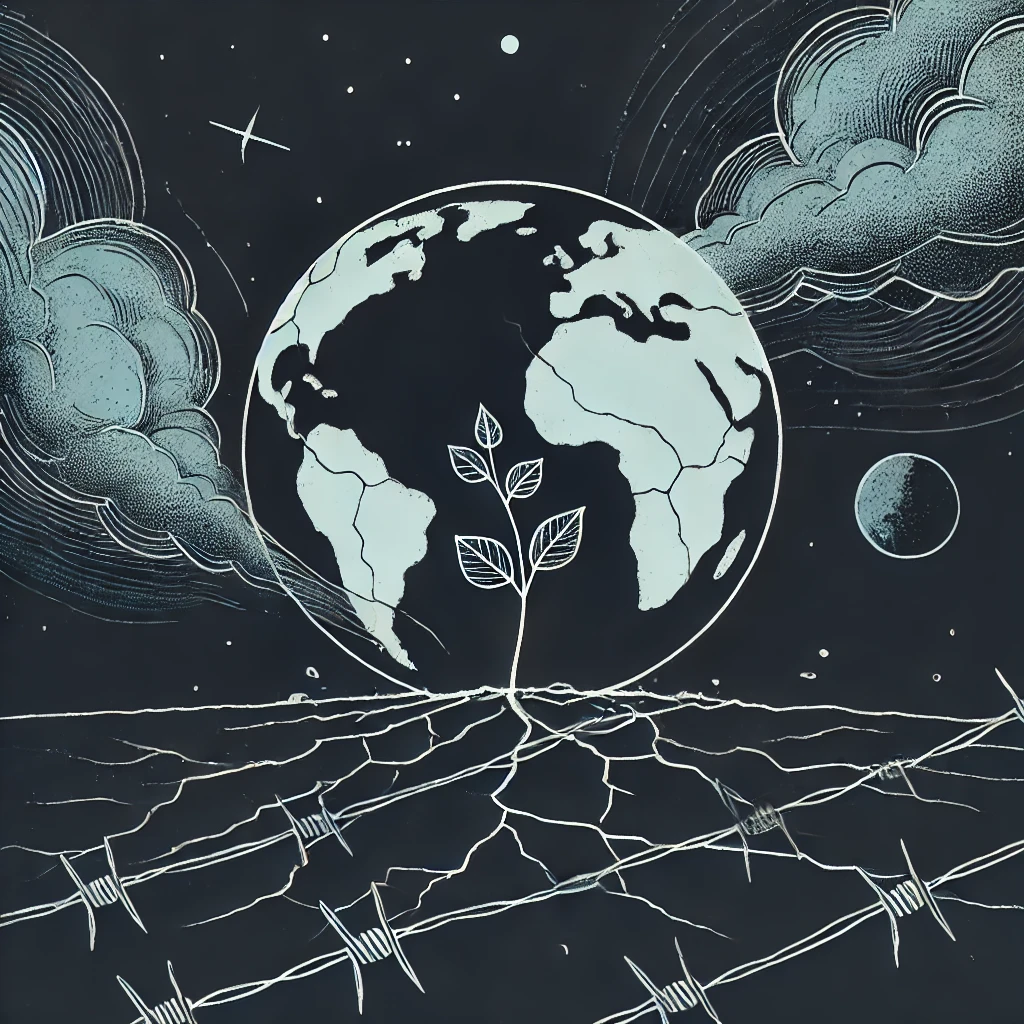what is dystopian literature?
Where did dystopian literature come from, and why has it continued to characterize some of the most popular modern fiction?
Introduction
Why is reading about worlds we would never want to live in so fascinating? Dystopian fiction transports readers to settings characterized by oppressive conditions that make daily life full of suffering. Dystopian literature emerged in the late 19th century and increased in popularity throughout the 20th century as technological changes and mass warfare raised fears about the future. The rise of film and television also enabled screen adaptions of dystopian works, increasing their popularity and impact. As technology and science create threats as well as opportunities, writers often seek ways to warn readers about the potential risks of these developments. The best dystopian books urge readers to take a closer look at the world around them and recognize dangerous social trends.

Understanding Dystopian Literature
What Is Dystopian Literature?
One dystopian fiction definition covers literature set in societies characterized by large-scale problems that require humans to live in a state of repression and danger, without agency or freedom. These settings might include inhospitable environmental conditions, ongoing threats of violence, rigid and authoritarian state control, persecution of certain individuals (often based on specific identities like gender, race, or genetic characteristics), and the suppression of specific rights and freedoms. These aspects of the setting (which is sometimes postapocalyptic) tend to contribute to characteristic plots: Often, the protagonist has a revelation or awakening that makes the world they inhabit intolerable, and they face conflict and antagonism from bureaucratic and repressive power systems in their quest to fight back.
Examples of dystopian literature are often characterized by moods of paranoia and fear and feature an ambiguous resolution to the central narrative conflict. Books with dystopian settings critique elements of the society that the author lived (or lives) in and warn about what consequences might lie ahead if society does not change for the better.
Common Themes in Dystopian Literature
With such a diversity of possible approaches, what do dystopian novels have in common? Dystopian fiction examples reflect contemporary societal issues by amplifying current trends or injustices to show how the world might look if these issues played out to the extreme. Since environmental destruction, poverty, and war are large-scale threats to human welfare, dystopian works often feature environmental disasters (including nuclear war and ecological collapse), social violence, and technology's negative impact on humanity. Usually, the threats that face humanity in dystopian fiction lead to oppression, totalitarianism, surveillance, propaganda, and misinformation stemming from corrupt government. Under these oppressive conditions, protagonists often encounter common themes in dystopian literature: isolation, dehumanization, ethical dilemmas (sometimes connected to resistance movements), survival, and loss of individual freedom. Because the settings of dystopian literature are usually marked by inequality, class conflict is another common theme.
Classic Dystopian Novels
Classic Dystopian Literature
Novels with distinguishing dystopian characteristics first emerged in the 1920s and 1930s, in the period after World War I. The mass casualties of World War I, as well as the brutal use of new technologies on the battlefield, left many writers dispirited about humanity’s future. Other crises, including the 1918-20 influenza epidemic and the rise of powerful authoritarian political regimes, also raised fears about what might lie ahead. As the century progressed, authoritarian ideologies like Stalinism and Nazism provided further evidence that a dystopian future could become reality, especially when people ceased thinking critically in favor of preserving an existing social order.
Aldous Huxley’s Brave New World (1932) imagines a futuristic version of America but challenges the notion that technological progress will improve daily life; instead, Huxley’s novel depicts a future in which science and technology generate rigid social stratification and rob individuals of their agency and ability distinguish themselves from the masses. George Orwell’s 1984 was published in 1949, shortly after the end of World War II, and reflects the author’s anxieties about what he witnessed under Stalinist and Nazi regimes. In the novel, the protagonist tries to rebel against authoritarian state control and psychological manipulation but is eventually subsumed by these forces. Ray Bradbury’s Fahrenheit 451 (1953) critiques censorship and the suppression of free speech, depicting a world in which books are outlawed and burned. Protagonist Guy Montag, a firefighter who burns books, becomes increasingly ambivalent about his role in this system and eventually rebels against it. The classic dystopian novels of the early and mid-20th century show that authors felt alienated from the world around them and saw the future as fearful and foreboding rather than hopeful. They were also concerned with the loss of individual agency and perspective as technological and political changes seemed to imply that human beings were becoming less individualized and more homogenous.
Impact and Influence
Classic dystopian novels have often functioned as tools for social critique and warning; in some cases, references to these classic texts have entered broader culture. For instance, the concept of “Big Brother”—a term referencing constant surveillance—originated in 1984. The rise of classic dystopian fiction books may have fueled a trend of literature and other art forms that depict threatening or catastrophic events and plots about survival in the face of extreme challenges. Video games, superhero and action movies, and even survivalist or “prepper” culture (in which individuals prepare for survival after disaster) all connect to dystopian literature’s exploration of how humanity and even heroism can persist despite dire circumstances. Top dystopian novels may also be popular because they help readers feel insulated from possible future threats. For example, the rise of true crime and its popularity among women (who are statistically more likely to experience violent crime than men) has been explained as a coping strategy that enables women to process and live with the threat of violence. The popularity of dystopian fiction might reflect a psychological need to imagine threats like environmental collapse and authoritarian regimes in fictional spaces to cope with the potentiality of these possibilities becoming realities.
Dystopian literature is an example of speculative fiction, a broader category of literature referring to any works that feature settings (or other plot elements) that do not mirror a present or historical reality. Other genres of speculative fiction include science fiction (fiction set in worlds that are markedly different from reality due to futuristic settings and scientific or technological innovations), fantasy (literature that incorporates magical and/or supernatural elements), and cli-fi (short for climate fiction, which explores the impact of climate change). Dystopian literature can overlap with these genres, and these genres can also contain dystopian elements. Dystopian narratives tend to be set in futures that are chronologically more proximate to the writer’s era, which adds a sense of urgency; these novels also tend to be darker in tone and more ambiguous in outcome. While they can have elements of a quest or adventure narrative, good dystopian books tend to be driven by crisis and the struggle to survive.

Modern Dystopian Fiction
Best Modern Dystopian Books
The best dystopian books of all time use the genre to explore current themes and social conflicts. Anthony Burgess’s A Clockwork Orange (1962) uses satire and black comedy to depict a violent subculture and the misadventures of a teenage protagonist, Alex. The novel explores themes of agency, free will, and conditioning, and reflects Cold War-era geopolitical tensions. P. D. James’s The Children of Men (1992) depicts a world in which humans are infertile and nearing extinction. The novel explores how environmental toxins can disrupt human fertility and how a declining or nonexistent birth rate might affect society. These precarious conditions lead to a violent, oppressive political regime that the protagonist, Theo, fights by joining a resistance group. Lois Lowry’s The Giver (1993) is a middle-grade novel depicting a seemingly ideal society; however, it is eventually revealed that this social order is predicated on the absence of intense emotions. Jonah, the protagonist, is selected to be the receiver of both painful and pleasurable emotions, and he eventually rebels against his controlled society to seek a more authentic life. The novel won the 1994 Newberry Medal.
Margaret Atwood’s The Handmaid’s Tale (which won the 1985 Governor General’s Award) depicts a world that dehumanizes women. In this setting, most women are infertile, but a small number (known as Handmaids) are raped and forced to bear children against their will. The novel, which follows a handmaid named Offred as she searches for freedom, is an indictment of misogyny, theocracy, and the disenfranchisement of reproductive rights. In Emily St John Mandel’s Station Eleven (2014), survivors struggle to form community and preserve art and culture after a pandemic nearly eradicates humanity. The novel won the Arthur C. Clarke Award in 2015. Cormac McCarthy’s Pulitzer Prize-winning novel The Road (2006) likewise depicts a postapocalyptic world in which an unnamed protagonist and his young son traverse a bleak landscape, struggling to survive. While the causes of the apocalypse are ambiguous, many critics treat the novel as a warning about climate change.
Kazuo Ishiguro’s novel Never Let Me Go (2005) features a world where cloned humans are used for organ harvesting; it depicts a love triangle between three characters, all of whom are clones created to serve as organ donors. As they mature, these characters question the nature of their existence and find themselves unable to accept the roles they were created to fulfill. Octavia Butler’s Parable of the Sower (1993) recounts the experiences of Lauren Olamina, a young woman who experiences hyper-empathy syndrome (in which she vividly feels the pain and pleasure of others). Lauren struggles to survive in a world ravaged by climate change, mass violence, social conflict, and deep social inequity. After her family is attacked, Lauren searches for a more hospitable environment and eventually establishes a community and a new religious movement known as Earthseed.
Many of these modern dystopian novels contemplate the consequences of environmental change that renders the world inhospitable and impacts human health (especially fertility). Dystopian literature examples also tend to depict worlds in which authoritarian regimes, social collapse, or some combination of the two emerge in response to crisis and instability. Many novels explore marginalized or disempowered groups who experience additional vulnerability in a destabilized society; these groups (including women, clones, or people with unusual powers or abilities) are often exploited in the wake of resource scarcity and bleak survival odds. Modern dystopian novels imagine both perilous futures and social responses to these crises marked by cruelty, violence, and social stratification. The conflict of the modern dystopian novel tends to revolve around a protagonist who rebels against an existing system, rejects their socially mandated role, or makes a bid for survival instead of passively accepting their fate. The protagonist typically encounters obstacles, endures suffering, and meets an ambiguous fate. Because dystopian fiction warns about what might lie ahead, ambiguous conclusions reflect the indeterminate nature of humanity’s future.
Young Adult Dystopian Novels
The plots of dystopian novels often involve one or more protagonists rejecting social norms by choosing to rebel or forge a different path. This plot structure lends itself well to stories of young adults recognizing social injustice and struggling against authority, and dystopian settings have become popular with some well-known young adult authors who often incorporate themes of coming of age and defining one’s destiny. Many young adult dystopian novels are published as series since the strong identification between young readers and young adult protagonists often leads to commercial success for sequels featuring the same world or characters. Writing multiple books in a series also means each individual novel can be shorter in length, ensuring a faster pace of reading and keeping the novels accessible to younger readers.
Suzanne Collins’s The Hunger Games (2008) is set in a postapocalyptic world in which teenagers are selected to kill one another in highly stylized spectacles; the protagonist, Katniss Everdeen, fights back against this system. Scott Westerfield’s Uglies (2005) depicts a world in which physical appearances contribute to social stratification and inequity, while Tahereh Mafi’s Shatter Me (2011) follows a young female protagonist whose unusual powers (she can kill people simply by touching them) make her the target of a repressive regime. The postapocalyptic world of James Dashner’s The Maze Runner (2009) features young characters who are exploited for experimentation after an epidemic of illness called The Flare. MT Anderson’s Feed (2002) critiques consumerism, advertising, and unchecked corporate power by depicting a world in which many Americans have digital devices implanted in their brains. Dystopian YA novels leverage young protagonists who are less inclined to accept the status quo and choose to rebel, thereby catalyzing the plot; they often also describe ethically ambiguous situations, prompting reflection among young readers who are still defining their values.
Beyond Dystopian Literature
Dystopian Fiction Across Media
Dystopian fiction has proved particularly well suited for the screen since the plots tend to be dramatic and action-packed. The complex and futuristic worldbuilding also creates a prime opportunity for specialized visual effects. A successful film or TV adaptation can both cement and augment the success of dystopian-society books; it will appeal to readers who are already familiar with the novel and is also likely to attract new readers.
Both classic and modern works of dystopian fiction have been successfully adapted; Ray Bradbury’s Fahrenheit 451 was adapted to film first in 1966 and again in 2018. Anthony Burgess’s A Clockwork Orange was adapted to film by director Stanley Kubrick in 1971, while the 2006 film adaptation of P. D. James’s The Children of Men was directed by Alfonso Cuaron and starred Clive Owen. Other books that received film adaptions include Lois Lowry’s The Giver, which debuted in theaters in 2014; Cormac McCarthy’s The Road, which starred Viggo Mortensen and was released in 2009; and Kazuo Ishiguro’s novel Never Let Me Go, released in 2010 and starring Keira Knightley and Carey Mulligan. Additionally, Alan Moore’s V for Vendetta was adapted into a 2005 film starring Natalie Portman; Philip K. Dick’s A Scanner Darkly was adapted into a 2006 film starring Keanu Reeves and Winona Ryder; and Ernest Cline’s Ready Player One was adapted into a 2018 film directed by Steven Spielberg.
Many dystopian books for teens have also been reimagined as movies, including Suzanne Collins’s The Hunger Games series. James Dashner’s The Maze Runner was adapted into a film in 2014, and an adaptation of Scott Westerfield’s Uglies will be released in 2024. Other popular dystopian novels have been adapted into television series or miniseries; Hulu’s television adaptation of Margaret Atwood’s The Handmaid’s Tale has aired for five seasons as of 2024, and Emily St John Mandel’s Station Eleven was adapted into an HBO miniseries. Hugh Howey’s Silo/Wool was adapted into a series that aired on Apple TV+.
Genres Related to Dystopian Literature
The core characteristic of dystopian literature is a futuristic world marked by partial or complete social collapse that complicates human survival; a book can incorporate this type of setting and also display other characteristics, leading to related subgenres. The cyberpunk genre typically incorporates elements of a dystopian setting while focusing on specific technological achievements like artificial intelligence or an increasingly digital culture; it often explores aspects of an underground or illicit culture that exists as a reaction against an oppressive society. LitRPG (literature that incorporates the conventions of role-playing games) may feature a dystopian setting since the archetype of a strong protagonist who rebels against society is common in games where the player controls the actions of a specific character. Likewise, the techno-thriller genre can feature dystopian settings and narrative tropes alongside its defining characteristic: a strong focus on technical details typically related to military technology.
Tropes associated with dystopian literature can also be utilized in related subgenres that emerged in response to contemporary social and ecological movements. Since climate change is usually represented as causing changes to the natural environment that lead to the collapse of social order, cli-fi frequently incorporates dystopian elements. While many related literary subgenres use dystopian elements to present dire warnings about the future, Afrofuturism notably functions as a form of speculative fiction that imagines a future characterized by increased sovereignty and agency for Black people. Dystopian elements may be incorporated to demarcate the society from which protagonists seek to escape or to juxtapose with utopian imaginings of the future.

Conclusion
Dystopian fiction has maintained significant popularity throughout the 20th and 21st centuries, and this popularity has been bolstered by the success of film and television adaptations. Dystopian novels for teens have emerged as a notable and successful genre, and the characteristics of dystopian fiction are also regularly incorporated into other types of speculative fiction. By depicting protagonists who refuse to accept the circumstances and societies that threaten to rob them of their fundamental freedoms, popular dystopian books offer engaging storytelling and inspiring depictions of humanity’s tendency to choose hope despite dire circumstances. The characteristics of dystopian societies (environmental catastrophes, autocratic governments, subjugation, and loss of autonomy) remain troubling threats, but under these circumstances, dystopian literature has more to offer than ever: It models how individuals can choose to fight for the values that define what it means to be human. If you’d like to learn more, check out SuperSummary’s collection of classic and modern dystopian works.